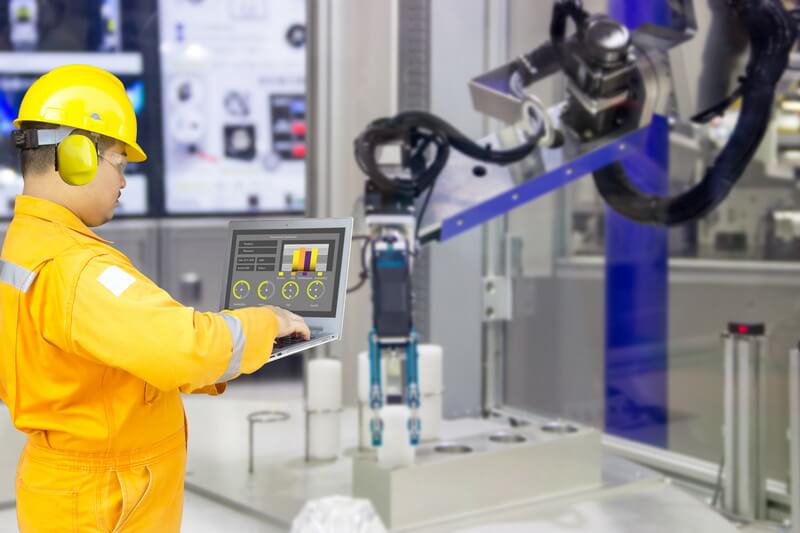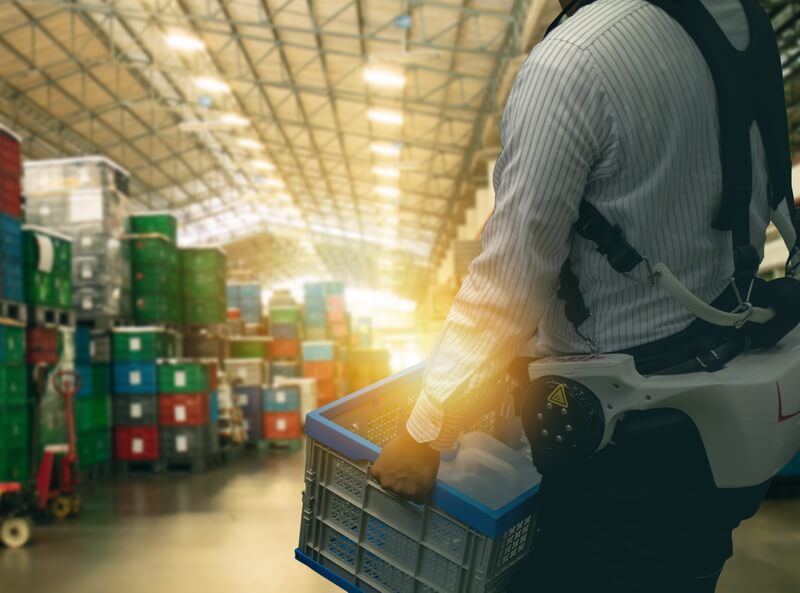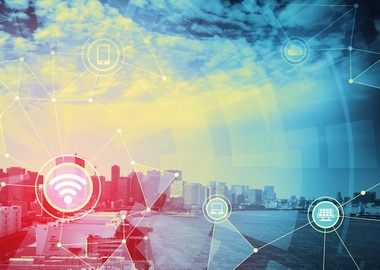How to Improve Workplace Safety with IoT
The number one priority for any company is to make sure that the working environment is as safe as possible. Thanks to accident prevention software and the Internet of Things (IoT), workplace safety has been taken to a new level. IoT implementation can serve as a typical accident prevention program that can be easily integrated into the safety system of your company and help to improve workplace safety. Let’s look at exactly how IoT can be useful.
The role of worker safety in IoT can only be understood upon the identification of the major culprits behind accidents in the working environment.
According to the National Safety Council, workplace accidents that result in employee injury occur every 7 seconds.
This just goes to show that accidents are more common than most people think. Let’s check the major reasons why workplace accidents may happen.
Lacking information about the job risks
Many employees don’t really understand the risks associated with the work they do. Because of this lack of information, they tend to work carelessly without considering their own and coworkers’ safety. The best way to reduce workplace accidents, in this case, is to collect data through IoT and give enough information regarding job risks. Nation Safety Net provides real-life examples of how IoT can help monitor employee safety, and thus minimize work risks.
Ignoring safety procedures and orientations
In addition to ignorance, negligence is another cause of workplace accidents. Failure to follow the right safety procedures and orientations directly affects employees’ safety. Necessary measures have to be put in place to ensure both employees and management follow all safety protocols.
Workplace distractions
Workplace distractions will always contribute to the occurrence of accidents in the workplace. The following are some good examples of workplace distractions:
- Phone calls
- Noise
- Email notifications
- Extreme temperature
- Unprofessional employee habits
A poor state of the job site
Poor working conditions have their fair share of contributing to workplace accidents that can be fatal. The construction industry has a high rate of occupational accidents, most of which are due to a terrible state of the workplace. Here are some examples of a poor job site:
- Clutter
- Exposed wires
- Poorly stored machinery
- Old office stationery
An inspection of the worksite is important to do before work can be initiated, as is the thorough inspection of the equipment.
The overconfidence of an individual worker
The last major reason why workplace accidents are common is due to the overconfidence of the worker. When employees feel they are completely in control, they may neglect the simple things (such as certain voices from devices) that may cause harm. For example, sometimes, workers ignore wearing Personal Protective Equipment, raising chances for incidents.
Companies like Fujitsu provide detailed case studies on worker safety, showing how the IoT solutions help to avoid injuries.
IoT in the workplace is probably one of the most innovative ways to increase safety that your company could adopt. Let’s look at some of the advantages of the application of IoT software to workplace safety.

Increasing the understanding of working environments with the help of connected sensors
When all employees have a better picture of the working environment, the frequency of accidents drastically reduces. Environmental sensors must be put in place to detect any potential threat to safety; however, such safety features may not be enough to completely avoid all possible accidents. This is where the use of connected sensors comes in handy if one sensor triggers, a lot of potential hazards can be identified and handled on time.
Imagine an Internet of Things warehouse management system that uses sensors to map not only the objects but also equipment, robots and people on-site, create a detailed picture of what is happening at the warehouse and foresee and prevent accidents in time.
Monitoring potential hazards
An important feature of IoT software is predictive maintenance, which is responsible for monitoring equipment in the workplace. The main idea here is that the software will be able to detect any structural failures in the connected devices, making way for corrective measures before any unfortunate accidents.
Tracking the physical state of employees to ensure safety
IoT solutions can be used for monitoring systems that may potentially fail. In doing so, management can use this information to make helpful predictions on workplace hazards and find a solution before anything happens. The regular inspection of all company property coupled with tracking the physical state of employees can optimize workplace safety.
The latter is possible thanks to major advances in health monitoring technology, especially through wearable devices.
For example, some startups focus on designing and building devices with communication systems, which could be connected to eyeglasses worn by employees to provide data that helps them make safer decisions.
Improving safety compliance
Employers need to create training programs for their employees to enable them to easily identify potential threats to their safety. IoT technology can then be used for monitoring and maintaining a safe work environment, especially through effective record keeping. In this particular case, records of compliance training are reviewed and management makes sure all employees have had adequate training, especially in safety etiquette.
Speed up and improve the efficiency of rescue operations
IoT in workplace safety also means that the function of monitoring equipment in the workplace can be enhanced. As a result, all connected devices will be able to work effectively in detecting a possible accident. In the unfortunate event of an accident, the rescue operations can be quickly initiated and a safe environment can be soon reestablished.
For example, here’s a case study showing how IoT is able to help in the case of an injured/fallen employee – when the person starts moving in a way that suggests a fall, special triggers on the helmet send the alert to the control station.
The use of environmental sensors can help prevent accident injuries in the workplace. This is especially true for accidents connected with the failure to detect a potential threat to one or several employees. IoT devices are now used to gather as much information from the working environment as possible. Here are some of the applications of IoT sensors in the workplace.
Track, gather and analyze employee’s data in real-time
Predictive analysis and AI (Artificial Intelligence) continue to become more popular. This kind of technology has been used in wellness apps that can track employee data in real-time so that management can eliminate potential risk to their employee’s safety before it actually happens. Additionally, if a safety-compromising situation arises, a suitable solution based on personal data analysis can be provided.

Get alerts on injury risks or accidents
IoT makes sure all devices used to track workplace safety are connected. This means any risk can be quickly registered as an alert and a quick response initiated depending on the nature of the risk. Employees with medical conditions, like cardiovascular problems accompanied by hypertension, usually wear electronic devices like wristbands to alert them of any risks. Establishing a connection to such systems with GPS will help to pinpoint the exact location of the worker.
Temperature, air quality and other environmental metrics monitoring
Analyzing this data in real time will make it possible to pick up any anomalies. Aside from wearable devices, other sensors should be able to quickly register any issue that might potentially lead to physical harm. All workplaces should have the following types of sensors:
- Ambient temperature sensors
- Air quality sensor
- Humidity sensors
- Flammable gas sensor
Share environmental data and biometrics of employees between supervisors via WiFi, Bluetooth, Zigbee or Z-Wave
IoT devices connected through WiFi, Bluetooth, Zigbee or Z-wave, can give employers and supervisors up to date data on the safety of their employees at all times. With the right systems put in place, all risks for a workplace injury can be easily detected. Once identified, employers can be quickly notified when any environmental sensors get triggered.
Contrary to what most people believe, workplace fires are quite common. In fact, most of these fires are accidental and could have been prevented if identified earlier. It is also known that most of these fires happen because companies want to save on costs to improve employee safety. IoT can achieve the following:
- Fire safety sensors that can detect temperature spikes to give clues to when a fire may spread. Some industries like the manufacturing sector usually have a higher risk of fires starting. IoT software enhances the detection of temperature spikes which is important in predicting the nature of a possible fire. This gathered data can be used to prevent a fire from spreading, aiding firefighters to act quickly.
- Tracking the vitals of firefighters Firefighters’ safety can be compromised while firefight, therefore, having software that can track their vitals can help detect any health problems that might bring unwanted consequences. One of the best technologies currently available is PHASER which can track all vitals such as body temperature, blood pressure, and pulse. Information is then sent back to the station to make sure no employees suffer any injuries during the job.
- Improving the upkeep of fire tracking systems Management can put in new technology that enables to track any potential fire hazards and report them if necessary. Nowadays, ITM (inspection, testing and maintenance) reports can be made and fire prevention systems can be inspected and updated if necessary.
- Fire prevention with smart technologies Reliable alert systems need to be put in place initially; for example, smart technology like Nest can help prevent fires. Using smart technologies to link your entire systems together, Z-wave and Zigbee are some of the best connection protocols to use. Fire safety sensors are very important in preventing fires and should be included in every building. It could also be used to monitor workplace power consumption, enabling companies to create a safe strategy for energy consumption.
Learn more
How to monitor and control electricity consumption using IoT for households and utility companies.
Advanced analysis refers to the use of highly reliable methods of data analysis to produce usable information that can help determine the solutions of events that have not yet occurred. It does this by making “what-if” calculations (calculating the possibility of something happening by using a different set of values or data). Advanced analytics have made identifying problems and decision-making easier than it used to be. This technology has been used extensively by many companies worldwide.
The best examples of data analytics include:
- Diagnostic analytics
- Descriptive analytics
- Prescriptive analytics using AI and big data
- Predictive analytics
Predictive modeling
Predictive modeling is a method of advanced analytics that can provide a different number of possible outcomes from data mining. In order to do this, however, you need software that can easily analyze the data provided, and this is where IoT employee safety software comes in.
Workplace accidents can also be predicted by this form of advanced analytics, which takes into account all the possible systems that may fail and lead to injury. A great case of useful predictive modeling can be seen in healthcare. For example, medical records of patients can be analyzed to determine if there is a chance of remission.
Risk forecasting
The ability of a supervisor to see the threat to employee safety is highly valuable. Risk forecasting does exactly this, and it can be done in two main ways. In the first (qualitative method), risk forecasting is done by the supervisor or employer to make predictions of any possible accidents that may occur in the future.
The other more reliable method utilizes mathematical models to analyze statistical data that can be used to predict errors. Both of these methods are useful in preventing workplace injury after corrective measures are put in place. Another advantage of risk forecasting is that it improves the accuracy of company planning. If a possible risk is able to be foreseen by supervisors or company management, they will be in a position to create a reliable risk-free plan that will work for all their employees.
Analyzing environmental and employee data in real-time
Another effective way to identify and react to accidents on time is by having a system solely developed to track both employee and environmental data. Employee data – like personal information, qualifications, any physical and mental health conditions – can be tracked in real-time. Thanks to Machine learning, all previous information can be fed into a system that can analyze data and predict a possible failure. And with a live analysis of data, any problems can be identified quickly by alert systems.
Gathering employee data and applying the right data visualization methods to it can also aid in identifying any health problems that may be or are currently faced by an employee. Behavioral data is also important to gather and analyze, and many companies can avoid future problems when this kind of data analysis is taken seriously.

Offering safety solutions based on data analysis
After various tools such as risk forecasting or predictive remodeling are put in place, work supervisors or employers will have the ability to find out solutions to problems before they actually happen. For example, a weakness in a security system can be predicted based on data analysis, and once this fault has been identified, measures can be successfully taken to fix it.
All of this is possible thanks to big data analysis techniques and their dependable visual representation. By collecting correctly organized and analyzed data, management teams can have all the information they need to make an important decision. The more information that is interpreted, the better industrial IoT safety strategies can be developed for the benefit of employees.
Feed.fm is a good example of data visualization technology that helps management, as well as any of the company’s clients, make data-driven decisions.
Improving the system of alerts
In order to react quickly to accidents, the quality of the alert systems must be improved. A good alert system can drastically improve workplace security. The nature of the risk can determine what kind of security system to use; for example, companies can use mobile applications that help employees alert other employees of any threat in a connected system.
Other stationary devices, like computers, can be effective as well. Advanced analytics will be used to assess the condition of hardware in the systems of alerts. When both software and hardware are in great working condition, avoiding and reacting to accidents in the workplace is also optimized.
Learn more
About IoT design and development services.
With the right tools and practices, any workplace can ensure all employees are safe.
At Digiteum we design and develop custom software that fully meets your industry requirements, regulations as well as your business objectives. Contact our team to talk about your software project.




